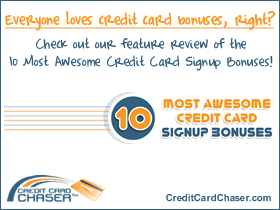All credit cards carry an interest rate whether it’s a fixed rate or a variable rate, but not every credit card carries a default interest rate. A credit card default interest rate is a penalty rate that can get triggered for any number of instances. Once the rate is triggered it is hard to reverse, so you should avoid triggering the default interest rate to the best of your ability. The new Credit CARD Act of 2009 has provided an “opt out” right in the event your default interest rate gets triggered.
How Default Rates Get Triggered
A default interest rate is also known as a universal default penalty rate, a penalty rate, and a default rate. By law, default interest rates can only apply if they are part of your credit card agreement (the fine print you signed when you agreed to become a card holder). Approximately 44% of banks put a universal default rate clause in their agreement which not only allows them to charge you a default rate if you trigger it on their card, but it allows them to charge the default rate to you even if you triggered it on someone else’s card. This is allowed because you are now considered a high risk.
There are many ways to trigger the default interest rate. Since your agreement allows banks to check your credit report at will, they will periodically do this to see if any of the triggers have been activated. The most common triggers include late payments, exceeding your credit limit, and bouncing checks.
Every bank has different allowances, so one bank may allow you to be late three times while another bank will increase your rate to the default just for being late one time. A late payment of even one day (or one hour depending on the cut off time) can trigger your default rate. The average grace period is 23 days, which means you have 23 days from the billing cycle to the due date to pay your bill.
Exceeding your credit limit is another common trigger and can happen in one of several ways. The most typical way is to simply purchase beyond your limit. Another way is if you are close to your limit and your interest is high enough the interest can cause you to go over your limit. Lastly, a credit card company can reduce your limit to below your current balance, automatically putting you over your limit.
The third most common trigger is bouncing a payment check, which means the check you wrote to make your credit card payment did not clear the bank due to insufficient funds. Other triggers that can activate the default rate include a late car payment or a late mortgage payment, a drop in your credit score, a late payment for a utility company, a high balance on your loans, a high debt to income ratio, and disputes over medical bills.
If you trigger the default interest rate on one card then you can trigger additional banks to activate their default rates, even with banks for which you never missed a single payment. This means that you can suddenly find yourself with alarmingly high rates on multiple cards. Furthermore, the new default interest rate typically applies not just for new purchases going forward, but to the entire current balance on your card. This can be quite alarming since rates can increase by 35% with the average universal default rate being 29%. To reduce these rates, see How to Reduce Credit Card Default Interest Rates.
How to Reduce Credit Card Default Interest Rates
Avoidance is always easier than reversing an act, so you want to try to avoid triggering your default interest rate at all costs. Track your minimum payments and due dates to avoid surprises or forgotten bills. Make sure you mail your check at least five days before the due date and don’t forget to take weekends into consideration. Some online bill pays are not instant either, requiring a payment be made two days before the due date in order to get paid on time.
Set up automated payments if you can in order to avoid being late. It may also be worthwhile to pay from an account with overdraft protection. The fee for that could be substantially lower than the late payment fee (typically $39) and the risk of triggering a default interest rate. Be certain you don’t pay your bill too early, either, or the money may get applied to your previous bill and you’ll still have to come up with the minimum for your next bill. Monitor your credit limit as needed to avoid going over it.
Additional steps you can take to avoid triggering the universal default is to monitor your credit report a minimum of once a year, preferably twice a year. Take strides to improve your credit score to avoid unexpected triggers. Review the terms of your current cards and consider eliminating the ones with default interest rates in their terms. Since you won’t know you’ve triggered the rate until it’s too late, be sure to read your mail for notices regarding this occurrence.
One the default rate has been triggered it is not easy to get it reversed. This takes some time and persistence because you will need to call each bank that raised your rates and ask them to lower it. Call the number on your card, not the number on your notice. This may take repeated phone calls, multiple departments, and a host of people. If you are repeatedly denied a lower rate then ask them to tell you exactly what you need to do in order to get your rate reduced. Sometimes this may be as simple as making six on-time consecutive payments in order to return to your original rate.
If the above fails but your credit is still good, you may want to consider applying for a low rate credit card and transferring the balance over to the new card. There is usually a fee for the balance transfer (somewhere between 3% and 6%) but this onetime fee is probably significantly less than what you would be paying in high interest rates until the balance is paid in full. In order to locate some low interest card cards now, use the free Credit Card Chaser tool online.
Opting Out of the Default Interest Rate
A new law passed in 2009 provides for an “opt out” right in most instances if you trigger a default interest rate. The law is called the Credit Card Accountability Responsibility and Disclosure Act of 2009 and is called Credit CARD Act of 2009 for short. If you trigger your default interest rate you must be given a 45 day advance notification of the change in terms and your notice must include information on your right to cancel. To exercise your “opt out” option, or your right to cancel, follow the instructions in your notice.
If you choose to opt out of the default interest rate, your previous lower rate will remain in effect but you will no longer be able to use that card. If you use the card for any reason, intentional or not, you void your “opt out” option and the default rate will go into effect. In order to keep this from happening, put your card away or destroy it. Set up different payment options for bills that were paid automatically by that card. Don’t forget to consider all of your automatic payment options, including the annual ones. Remove the card information from any online stores that may have retained it.
The Credit CARD Act of 2009 also addresses some other credit card practices such as standardizing due dates, requiring free online and free telephone payment options, and giving credit card holders options for how to handle over the limit situations. While this law may help reduce the pain of default interest rates, the best way to remain pain-free is to use your credit cards responsibly. When used correctly, credit cards can help build your credit and even save you money. You can use the credit card chaser on our home page to locate credit cards that do not have default interests rates now!
Similar Articles:
- What are the hidden costs with credit cards?
- What is a credit card penalty rate?
- What is the highest credit card interest rate allowed by law?
- What happens when my credit card payment is late?
- Can you do anything about unfair credit card rate increases?
- Universal Default
- How does the balance on credit cards affect interest?








